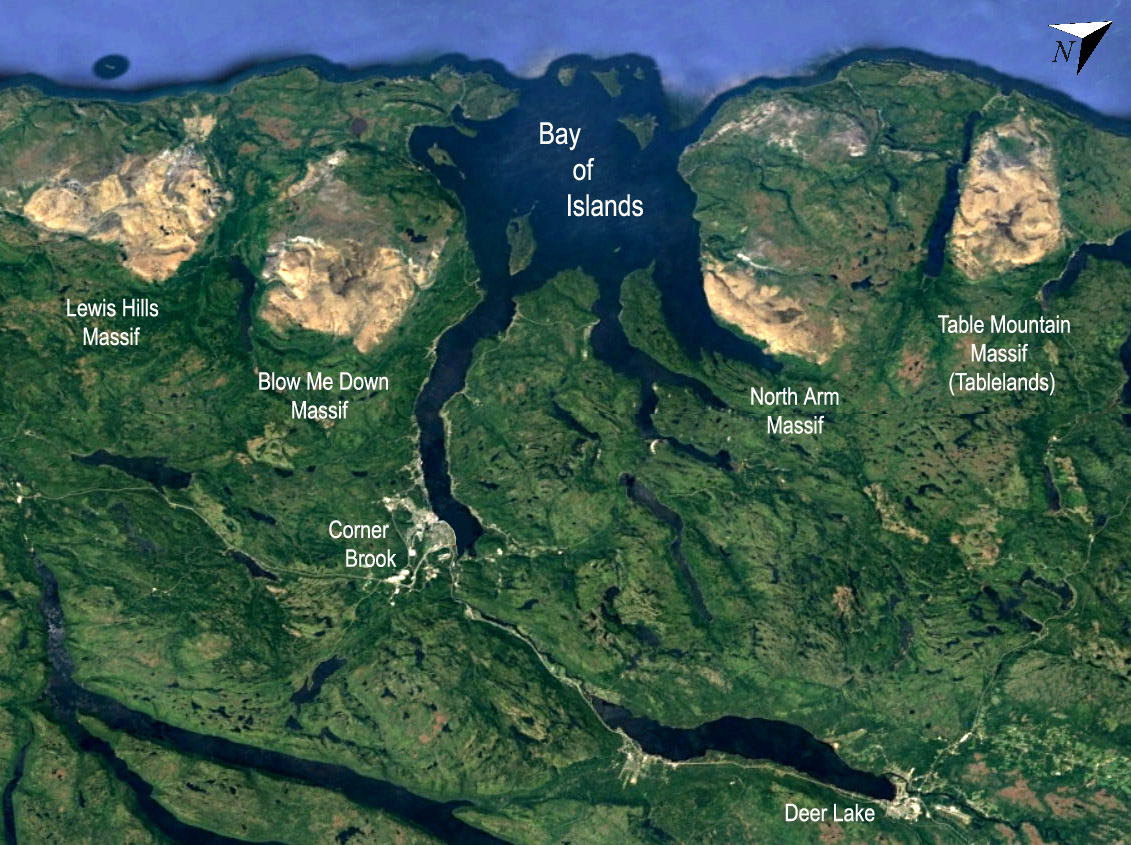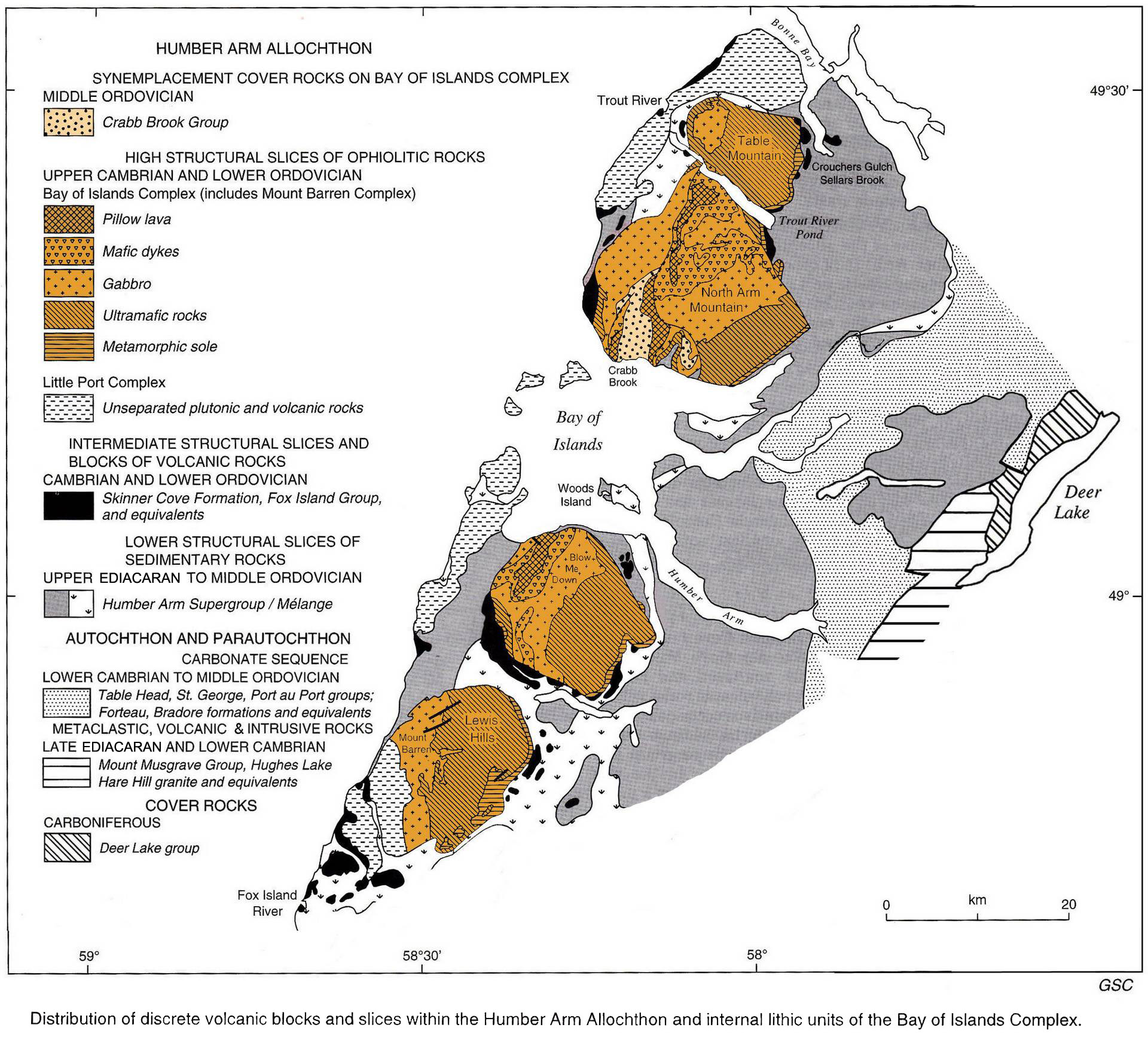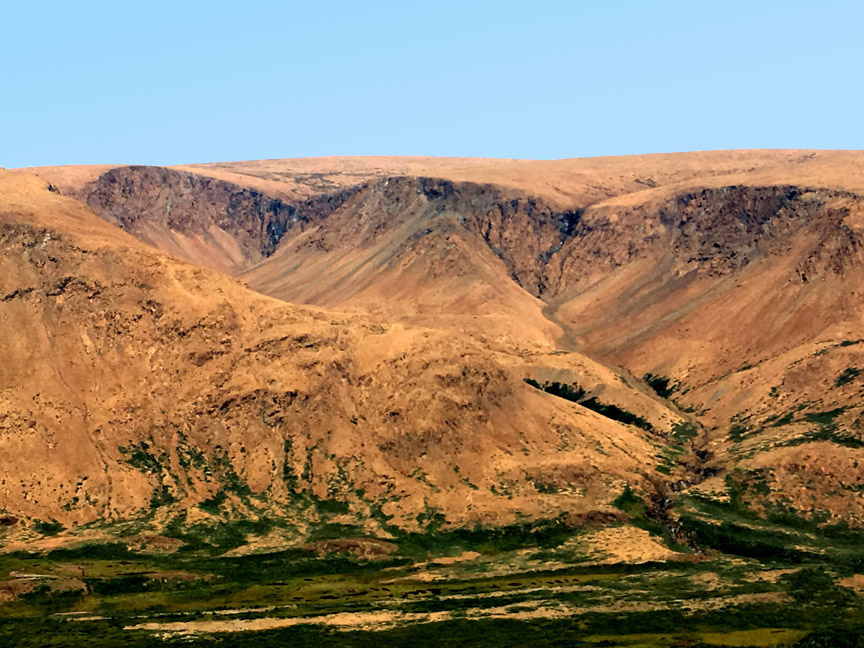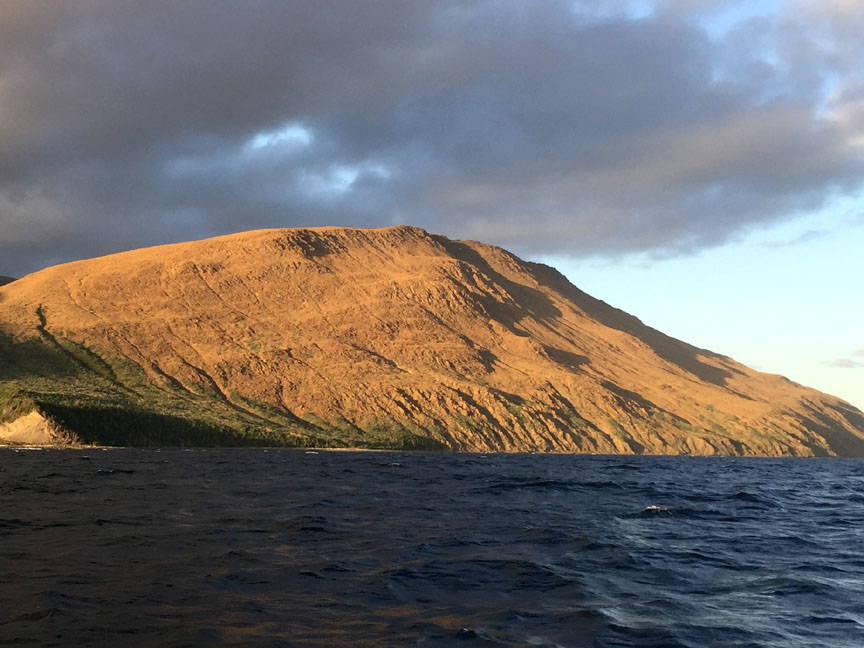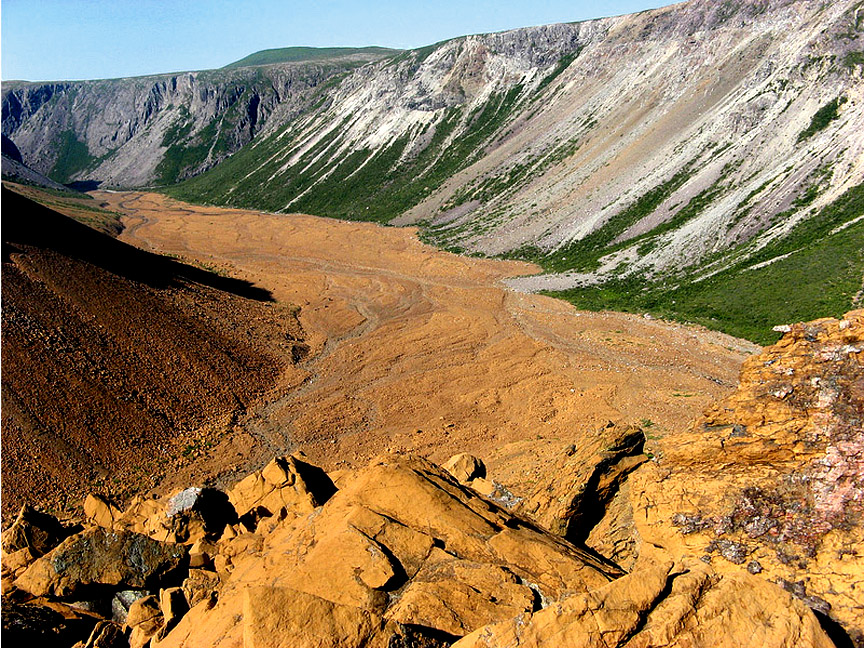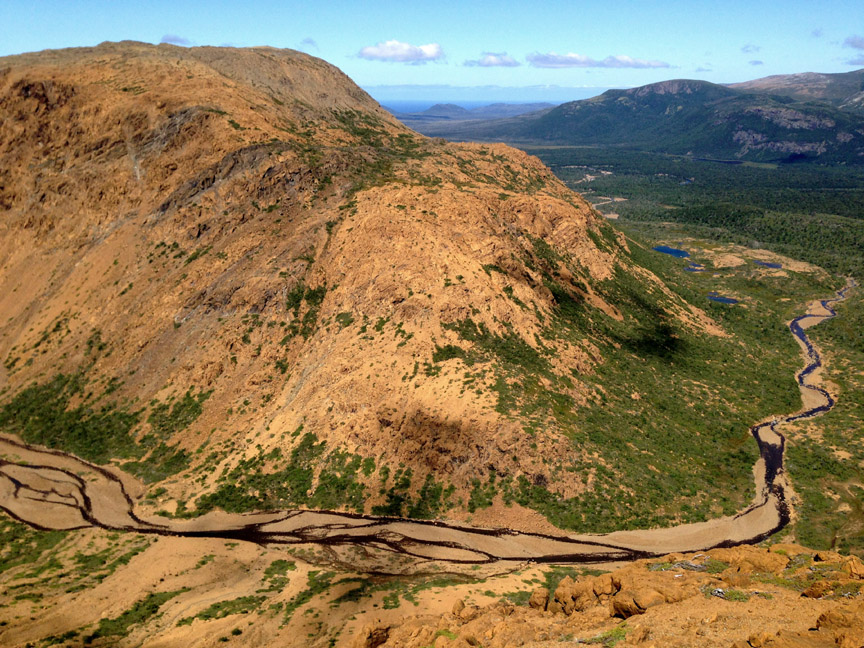Group C: Bay of Islands Ophiolite Complex
GeoSite Group C includes the Bay of Islands Complex Ophiolite Massifs. These are the most obvious and spectacular natural features in the Aspiring Geopark, forming high upland plateaus and dissected mountainous terrain. There are four such massifs located north and south of the Bay of Islands. The Tablelands Ophiolite, in Gros Morne National Park, contains a number of defined geosites, including the Moho (Mohorovicic Discontinuity), but numerous potential sites exist in the other massifs. The Blow-Me-Down and North Arm Mountain massifs contain the most complete ophiolite sequences, but many are remote and only accessible by boat and/or hiking trails, including the International Appalachian Trail.
Rock types are Cambrian to Ordovician and largely of igneous origin, but include some sedimentary rocks associated with the ancient ocean floor. From lowest to highest topographically and structurally, the massifs consist of ultramafic rocks (harzburgite and dunite), layered to massive gabbro, sheeted diabase dyke complexes and pillow basalts erupted on the sea floor. Felsic rocks representing differentiates of mafic magmas and/or partial melts of oceanic crust are also preserved in some slices. Metamorphic rocks preserved in some areas record the conditions of emplacement of these complexes above the rocks of Site Group B.
GeoSite Group C represents sections of oceanic crust, likely developed within arcs and back arc basins in the ancient Iapetus Ocean. These have been tectonically transported across the largely sedimentary rocks of GeoSite Groups A and B. The rocks of Group C provide insight into the nature and structure of the oceanic crust, and are some of the best-known and best-preserved ophiolite suites known in the geological record.

